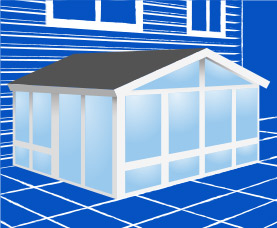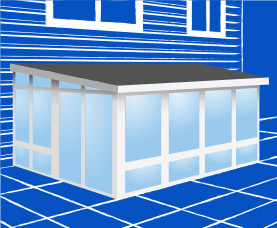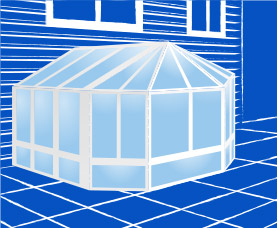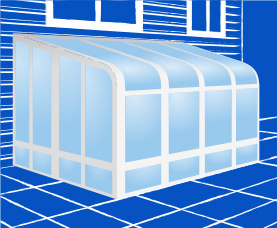Our companies are backed by the Best Pick Guarantee. Call one today!
Building a Sunroom? Learn the Pros and Cons of Each Type
September 27th, 2013 byIf you want a room that will allow you to enjoy nature without stepping outside, it could be time to seriously consider adding a sunroom to your home that will give you a front-row seat to nature.
No other room provides the luxury of viewing the beauty of the outdoors while enjoying the shelter of your home. Because of their large glass walls, sunrooms are loved for the amount of natural sunlight they let in.
Perhaps the most important part of deciding which type of sunroom is best for your lifestyle is to think about how much use you want to get out of it and how much money you would like to spend.
There are two main types of sunrooms: three season and four season; these rooms can be used for part of the year or the entire year, depending on the weather in your area. Below are the main differences between the two room types, along with some factors that will help you decide on your best option:
Three-Season Room
- Glass: Built with less energy-efficient glass
- Insulation: Has minimal to no insulation
- HVAC System: Usually absent of HVAC system due to little or no insulation
- Entry Door: Door between the house and sunroom is typically studier, like an entry door, to keep out cold air
- Budget: Essentially a covered outdoor space and does not require the same quality of insulation and glass that a four-season room needs
Four-Season Room
- Glass: Built with highly energy-efficient glass
- Insulation: Same insulation requirements as a normal room addition
- HVAC System: More efficiently heated and cooled by HVAC system due to higher-quality insulation
- Entry Door: Does not require a door, but homeowners can add a French door or other patio door
- Budget: Added onto the house and needs the same quality of insulation and glass that the rest of the house has
While the choice between a three-season or four-season room is based mainly on how the room will function in your life, choosing the right architectural structure for your sunroom will depend on your design preferences and how that design will fit your house.
The various types of sunroom structures are known by several different names, but most can be grouped into the categories defined by the National Sunroom Association: gable, shed, conservatory, and solarium.
Gable

- Gable sunrooms consist of two roof panels that are supported by a center beam with the panels sloping in opposite directions, giving the room a cathedral ceiling.
- Can opt for screen walls instead of glass walls.
- Structure can be easily designed to match the house.
Shed / Studio

- A shed or studio sunroom has a single-pitch roof that slopes away from the house.
- Can opt for screen walls instead of glass walls.
- Structure can be easily designed to match the house.
Conservatory

- Consists of a lean frame, glass walls, and a glazed glass or polycarbonate roof, which are segmented with either aluminum or wood beams.
- Knee walls can incorporate exterior finishes from the house to create continuity between the two structures.
- Originally designed for cultivating warm-weather plants.
- Can be built as a freestanding structure.
- Has a traditional appearance.
Solarium

- Like a conservatory, solariums consist of glass walls and a glazed glass or polycarbonate roof, which are segmented with either aluminum or wood beams.
- Solariums are lean-to structures and are usually built with a single slope or gable roof.
- The walls and roof are joined with a continuous curve.
- Knee walls can incorporate exterior finishes from the house to create continuity between the two structures.
- Has a modern appearance.
Not only are sunrooms an addition to your home, but they can also be a place where you can easily escape from your everyday life without leaving your house. Because sunrooms are customizable, be sure to thoroughly research your options before making a final decision.
Speaking with a trusted contractor could also help you narrow down your choices and get you closer to enjoying the beauty of nature within the comfort of your home.






















